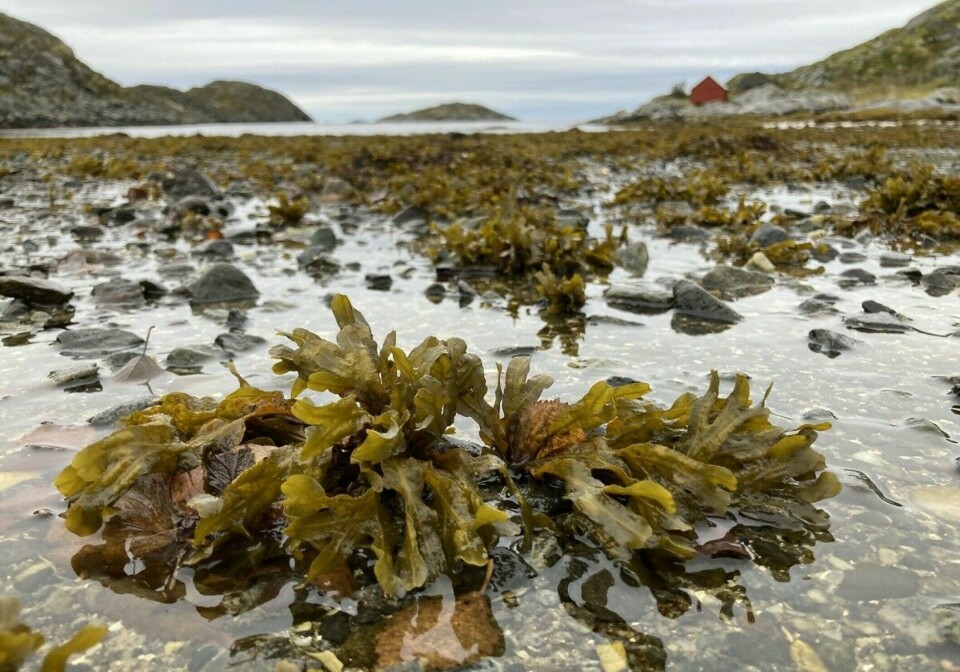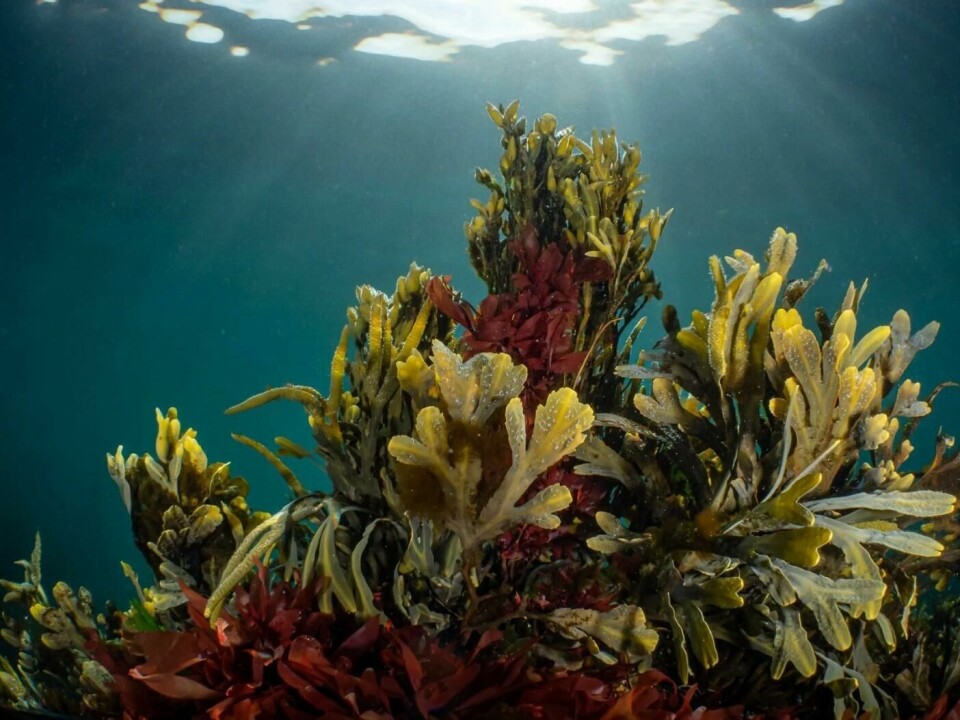THIS CONTENT IS BROUGHT TO YOU BY Nord University - read more

Bladderwrack and serrated wrack provide unique insights into evolutionary history
A select few, but common brown algae species have developed sexual reproduction with egg and sperm. "It's like seeing a glimpse of what may have happened in our own past," a researcher says.
"These algae have no particular kind of behaviour. They don't walk around, they don't talk, they all look exactly the same. So why have they suddenly developed different genders," researcher William Hatchett at Nord University asks.
He has researched reproduction and evolution in the brown algae genus, Fucus. The genus consists of four species: bladderwrack, serrated wrack, spiral wrack, and rockweed.
“Fucus species have evolved completely independently of land plants and animals. They are on a completely different branch of the evolutionary tree. Nevertheless, they have now developed a way of reproduction similar to that found in the animal kingdom, with sperm and egg cells. This is a unique form of evolution among brown algae," Hatchett says.
Same appearance to the naked eye
If you go for a walk on the shore and step out onto a cluster of bladderwrack, it is hard to tell the difference between male and female algae.
In spring, however, you will be able to see that the seaweed is slightly swollen at the tips, where bags with either sperm or eggs are found. They are now ready to be released into the ocean to meet and become fertilised.
“They have few external features that show the differences between male and female. One must look carefully at the egg or sperm sack tissues with a microscope to determine the sex. In other words, we are at the very beginning of the development of different genders and the start of sexual dimorphism. It's like seeing a glimpse of what may have happened in our own past,” Hatchett says.

Professor Galice Hoarau at Nord University has studied the Fucus species for over 20 years.
He emphasises that we do not know whether what we see in these seaweed species is the same thing that laid the foundation for gendered reproduction in plants and animals perhaps one and a half billion years ago.
“But these brown algae are very suitable for studying evolution at the egg and sperm level. Besides, they are a very important part of the marine ecosystem. These algae are found in large quantities along the entire seacoast, they are important habitats for many different animals and are extremely important for local species diversity,” Hoarau says.
Species hybrids are unfavourable
The well-known seaweed species also contribute knowledge about how new species can arise in nature.
"We have several places where bladderwrack and saw rack live side by side today. In Northern Norway, they have lived together since the last ice age, for 10,000 years, while in Iceland and Kattegat, human have introduced one of the two species within the last 100 years," Hatchett says.
In the places where they have lived together for a short time, they reproduce with each other, forming hybrids. But not in Northern Norway, where they have lived together for thousands of years.

According to Hoarau, this shows that there is a selection against hybridisation. That is, individuals that are a mixture of two species are less adaptable than individuals that are purebred.
Over time, traits that distinguish the two species will become increasingly prominent, so that eventually they will no longer be able to reproduce with each other.
“We believe that this is due to sexual selection in the algae. Therefore, we focus on the Fucus species and the genes that are linked to sex formation. They can tell us something about the general mechanisms in nature on how a species is maintained and how new species are formed,” he says.
Faster evolution in males than females
Evolution also causes the sexes of the species to develop differently. Men and women, females and males, appear and behave differently despite belonging to the same species and sharing the same genetic material.
In genetics, we refer to what are known as 'sex-biased genes' – genes that are oriented towards a specific gender.
"These are genes that are expressed differently in males and females," Hatchett explains.
These are the genes that gives male peacocks their impressive plumage, or that give male lions a mane while the females do not have these features. But not all species allow the effects of these genes to be so visible over such large parts of the body.

"In the Fucus species, we often see that these genes in males are primarily expressed in the reproductive tissue, while in females they were expressed in the whole organism and not just in reproductive tissue," Hatchett says.
Sexual reproduction – a process of the fusion of two gametes, each with its own genetic material, to create a new and genetically unique individual – plays a vital role in evolutionary history.
Sexual reproduction leads to variation in genetic materials, so that individuals with the right genes can adapt and survive when the environment around them changes, such as through climate changes.
But the presence of sex-biased genes means that evolution also works at different speeds in both males and females.
"The fact that evolution affects males and females differently has been known since Darwin introduced his theory of evolution by natural selection in 1859," Hatchett says.
Darwin's concept of sexual selection is about how genes that increase reproductive success are favoured, even if they do not affect, or even reduce, the individual's ability to survive.
Evolution is predominantly driven by the number of offspring that survive and their ability to reproduce and pass on their genes.
“In the animal kingdom, it is generally accepted that male-biased genes evolve faster due to mechanisms such as competition between sperm. In nature, there are also examples where female-biased genes develop faster than genes that are not sex-biased, especially in other brown algae species. But in our study, we found that the male-biased genes showed an accelerated rate of evolution,” Hatchett says.
In males, changes in these genes occur at a faster pace.
Mapping the whole seaweed genome
Hatchett and his colleagues found many such sex-biased genes in the four Fucus species. He believes that this may be related to the development of different gametes in males and females, so called anisogamy, in the form of eggs in females, and sperm in males in this brown algae species.
Usually, in other brown algae you find isogametes, which is when gametes are indistinguishable from one another. Unlike eggs and sperm, isogametes are similar in size and shape.
"An example of this is from the bown algal species Ectocarpus siliculosus. It also has sex-biased genes, but in much smaller numbers than the Fucus species, possibly as a result of anisogamy," Hatchett says.
Whether it will become easier to distinguish between males and females in the seaweed belt as time goes by and evolution progresses remains to be seen. In the meantime, Professor Hoarau looks forward to delving even deeper into the genetic material of the bladderwrack and its relatives.
"A major research project is currently taking place at the biological station in Roscoff, France, where the entire genome of many brown algae species is being mapped. We have collected substantial amounts of material so that everything is in place for a closer look at fundamental evolutionary issues. This is important fundamental research that is taking place here in Bodø," Professor Hoarau says.
Reference:
Hatchett et al. Evolutionary dynamics of sex-biased gene expression in a young XY system: insights from the brown alga genus Fucus, New Phytologist, 2023. DOI: 10.1111/nph.18710

This content is paid for and presented by Nord University
This content is created by Nord University's communication staff, who use this platform to communicate science and share results from research with the public. Nord University is one of more than 80 owners of ScienceNorway.no. Read more here.
More content from Nord University:
-
Kateryna's university has been bombed three times – but she's still teaching
-
5 things you didn't know about smart cities in the Arctic
-
AI sparked an idea that could improve road safety in Norway
-
These algae have been adapting for hundreds of millions of years
-
Could traces of bacteria in water combat salmon disease?
-
Bladderwrack in animal feed has the potential to reduce methane emissions




































